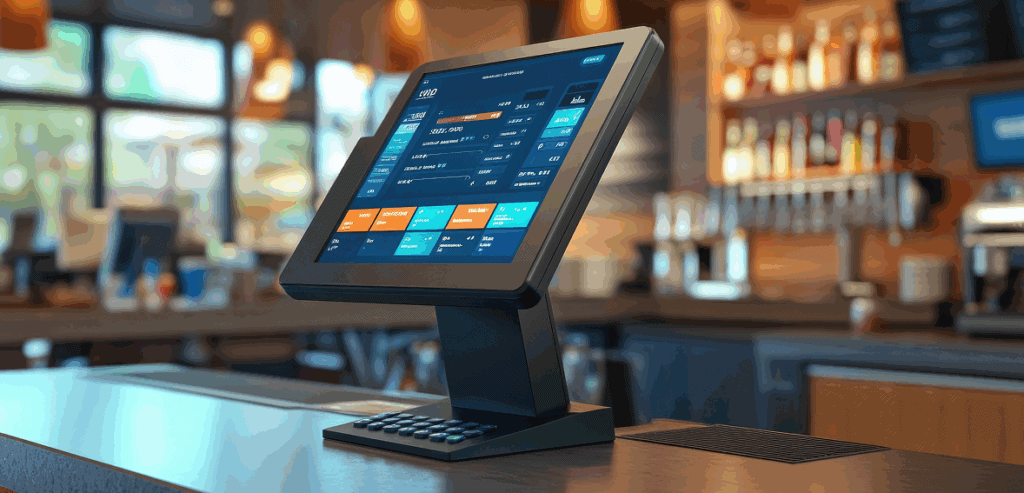
By Georgia Robinson May 7, 2025
In 2025, the move toward a cashless economy is more than a trend — it is becoming a business necessity. From local cafés and food trucks to boutiques and service providers, small businesses across the United States are increasingly embracing digital payments as the primary method of transaction. This shift has been driven by consumer preference, technological advances, and practical concerns around efficiency, security, and hygiene.
For small business owners, adapting to a cashless model is no longer just about convenience. It is about survival in a competitive, fast-moving marketplace. In this article, we explore how small businesses are responding to this shift, the benefits and challenges they face, and what it means for their future operations.
The Rise of Digital Payments
The adoption of digital payments has surged over the past decade. In part, this acceleration was catalyzed by the COVID-19 pandemic, which pushed businesses and consumers alike to favor touch-free payment options. What began as a response to safety concerns has evolved into a lasting behavioral change.
Today, customers expect speed, flexibility, and multiple payment options — often preferring to pay with cards, mobile wallets, or QR codes rather than cash.
Key Drivers of the Shift
Several forces have contributed to the rise of cashless commerce:
- The widespread use of smartphones with digital wallets like Apple Pay and Google Pay
- Improved internet access, even in rural areas
- Enhanced payment technologies that make digital transactions faster and more secure
- The convenience of automatic tracking, tipping, and receipts for customers
The result is a culture that increasingly views cash as inconvenient or even obsolete.
How Small Businesses Are Responding
Small businesses that were once cash-heavy are adapting to meet new expectations. For many, this involves integrating point-of-sale (POS) systems with card readers, QR code payment tools, and mobile processing solutions.
From coffee shops to craft markets, businesses are finding ways to go cashless without sacrificing customer experience or alienating traditional shoppers.
Investing in POS Technology

Modern POS systems allow small businesses to manage inventory, accept various payment types, and track customer data — all from a single platform. Brands like Square, Clover, and Toast have made it easier than ever for even the smallest vendors to accept digital payments.
Cloud-based POS systems also provide flexibility, allowing merchants to process payments from tablets, smartphones, or countertop terminals depending on their setup.
Adding Mobile Payment Options
Mobile wallets are now widely accepted in both urban centers and smaller towns. Businesses that allow customers to pay using Apple Pay, Google Pay, or Samsung Pay are meeting demand while benefiting from fast, encrypted transactions.
Many small businesses also use apps like Venmo or Zelle, particularly for peer-to-peer-style services like tutoring, pet care, or beauty treatments.
Transitioning Away from Cash
Some small businesses have opted to go fully cashless. These merchants believe the benefits — including quicker service, reduced theft risk, and simplified bookkeeping — outweigh the drawbacks. They post signage to inform customers in advance and train staff to handle objections with empathy and clarity.
Others continue to accept cash but promote digital payments through loyalty rewards or express checkout lines.
Benefits of Going Cashless
The shift to cashless operations offers small businesses several strategic advantages. From faster transactions to better financial tracking, the digital model can support growth and streamline day-to-day management.
Operational Efficiency
Digital payments reduce the time staff spend counting change, preparing bank deposits, or balancing registers. This saved time can be redirected toward customer service or business development.
Improved Cash Flow and Reporting
Digital payments process faster than cash and automatically generate records. This makes bookkeeping simpler, speeds up reconciliation, and provides real-time insight into sales performance.
For businesses seeking loans or investors, clean financial data can also boost credibility and transparency.
Enhanced Customer Experience
Modern customers value speed and convenience. A smooth checkout process, whether via tap-to-pay, mobile wallet, or self-service kiosk, enhances satisfaction and can increase repeat business.
Lower Security Risks
Handling cash presents physical security risks, from theft and loss to robbery. Going cashless reduces the amount of cash on-site and limits employee exposure to those risks.
Challenges of Cashless Adoption
While there are many benefits, going cashless is not without its difficulties. Small businesses face technical, financial, and social challenges as they make the transition.
Setup Costs and Learning Curves
Investing in POS systems and payment hardware requires upfront capital. Businesses must also train staff to use new tools and troubleshoot customer issues with payment processing.
In some cases, switching to digital payments may also mean navigating multiple vendor relationships for POS software, payment gateways, and compliance services.
Processing Fees
Credit card and mobile payments come with processing fees, typically between 2 to 3 percent per transaction. For businesses operating with slim margins, these costs can add up quickly.
Negotiating rates with processors, choosing the right fee structure, and monitoring effective rates become essential tasks for business owners.
Accessibility and Inclusion Concerns
Some customers — especially seniors, underbanked individuals, or those with limited access to financial services — still rely on cash. A completely cashless model can unintentionally exclude these groups.
Businesses must strike a balance between embracing innovation and remaining accessible. In some areas, including parts of California and New York, laws require that cash still be accepted.
California’s Legal Landscape on Cashless Businesses
In California, the push toward digital payment options intersects with consumer protection regulations. While many merchants are eager to go cashless, state and local policies are evolving to ensure fairness and accessibility.
Some cities and counties in California have proposed or passed ordinances that restrict cashless-only businesses. These regulations aim to prevent discrimination against cash-dependent consumers.
What California Merchants Should Know
As of 2025, California does not have a statewide ban on cashless businesses, but local jurisdictions may enforce their own rules. It is important for business owners to:
- Research city-specific regulations
- Display clear signage if cash is not accepted
- Offer alternatives or accommodations where feasible
Maintaining flexibility in payment options can help small businesses stay compliant and community-friendly.
Case Studies: Small Businesses Making the Switch
Across California and beyond, small businesses are navigating the transition to cashless operations in creative and practical ways. These examples highlight how different sectors are adapting based on their unique needs.
A Los Angeles Coffee Shop
This café transitioned to a fully cashless model in 2023. By doing so, they reduced theft concerns, sped up the checkout process, and eliminated daily bank runs. They also implemented a loyalty program that ties directly to mobile payments, boosting return visits and customer engagement.
A Bay Area Pop-Up Vendor
A mobile clothing vendor in Oakland operates using a smartphone and a Square reader. Customers can pay with cards or digital wallets, and the vendor uses the integrated POS system to track inventory and gather insights into best-selling items.
A Fresno Auto Detailing Service
This service-based business accepts payments through Zelle and Venmo, allowing for seamless digital transactions after each job. By providing mobile payment links via text, the owner has eliminated the need for paper invoices and late collections.
Preparing for a Cashless Future
As consumer preferences continue to evolve, the trend toward cashless commerce is expected to grow. Small businesses that prepare now will be better positioned to thrive in a digital-first economy.
Steps to Get Started
If you’re a small business owner considering a move to cashless operations, here are some essential steps:
- Evaluate your current payment setup
- Choose a reliable POS provider with transparent pricing
- Train staff on how to manage digital transactions
- Communicate changes clearly to customers
- Monitor customer feedback and remain adaptable
Starting gradually — for instance, by encouraging digital payments rather than requiring them — can help ease the transition.
Staying Informed
Keep up with changes in payment technology, consumer behavior, and state regulations. Attend local business workshops, consult with your payment processor, and network with other business owners to share strategies and solutions.
Conclusion
The shift to cashless commerce is reshaping how small businesses operate, connect with customers, and manage their finances. In 2025, going cashless is not just about following a trend — it is about embracing a more efficient, secure, and customer-friendly way of doing business.
While challenges exist, the rewards of adapting to a digital payment model can be significant. By making thoughtful choices, investing in the right tools, and staying attuned to customer needs, small businesses can thrive in a cashless future without leaving anyone behind.